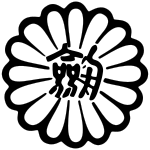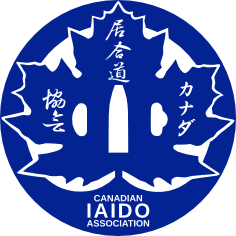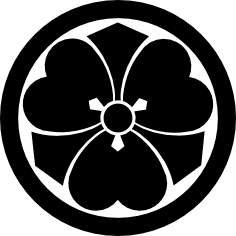Apparel Rules
Apparel Rules for Shinsakai (testing) and all Kai, Kyōgikai (tournaments), Koshukai (seminars), and Enbukai (demonstrations)
As with any martial art, there is acceptable attire and apparel for use during seminars and practice for Iaido. Please make sure to tell your students and fellow practitioners about the following rules.
Regarding Gi and Hakama:
For shinsakai a black gi and a black hakama are required. Appropriate practice apparel is a black Gi, or black dogi, and black hakama; a white dogi is acceptable but must have long sleeves (This means the wide formal sleeves). A white Hakama is strictly not allowed. Certain colours have reserved meaning in Japanese culture, so it is important not to wear inappropriate colours.
Regarding Montsuki:
Starting from Yondan, it is acceptable to wear a black Montsuki. In the Summer, when it’s hot, a white Montsuki is also allowed but it needs to be an opaque material (not see through). The official material for the black Montsuki is silk; however, since silk is expensive, mixed material is also allowed. In the summer, a more breathable material is also acceptable. The colour of your Montsuki or gi must be black (or white, if given permission), no other colours are allowed. You must get permission from the CIA President, Vice President, or ZNIR Overseas Auditor Itoh Sensei before you wear any Montsuki of any kind.
Regarding Tabi (Iaido Slippers):
Starting from Hachidan (8 Dan), all iaidoka can wear tabi, but the colour must be white. All other colours besides white are not allowed. Women, however, can wear white tabi starting from shodan. If anyone wishes to wear Tabi for any other special reasons (for instance, health reasons), they can wear them only after getting permission from the ZNIR Overseas Auditor.
Regarding Sendaihira Hakama (Striped Hakama):
Starting from Godan, you will be able to wear Sendaihira Hakama. The official material of the Sendaihira is silk, but since silk is very expensive, in a Koshukai or a Shinsakai, mixed material is also allowed, but we do not recommend it. You need to have the CIA president’s, vice president’s, or Kansayaku’s permission to wear these. In an Enbukai, or Kyōgikai, however, mixed material Sendaihira hakama is strictly not allowed.
Regarding Haori (Coat):
Starting from Godan, you may wear a black Haori. When you are wearing a Haori, you have to have a black Montsuki and a Sendaihira Hakama. You need to have the CIA President’s, Vice President’s, or ZNIR Overseas Auditor’s permission to wear these. However, in accordance with tradition, when at a ZNIR Taikai or ZNIR Shinsa in Japan, you are not allowed to wear a Haori until you have attained the rank of Hachidan.
Regarding Sageo:
Traditionally, the sageo must be dark unless you are a high Dan sensei, and usually your Sageo’s colour is the same as your Tsuka’s colour, which is recommended to be dark, or black. In accordance with tradition, white Tsukas are not allowed.
Regarding Tennogui (headband, like the ones used in Kendo):
You cannot wear Tennogui on your head, just keep it in your sleeve or the front of your Gi if you need one.
Regarding Beginners Apparel:
Beginners can use dark track pants and dark tops, and can use a wooden sword. Mogi-to (Iaito) is acceptable, but first you will need to acquire a Gi and Hakama before you purchase your Iaito.
These rules are the result of consulting with ZNIR officials and the ZNIR Overseas Auditor, and must be followed by anyone who wishes to attend our seminars.




